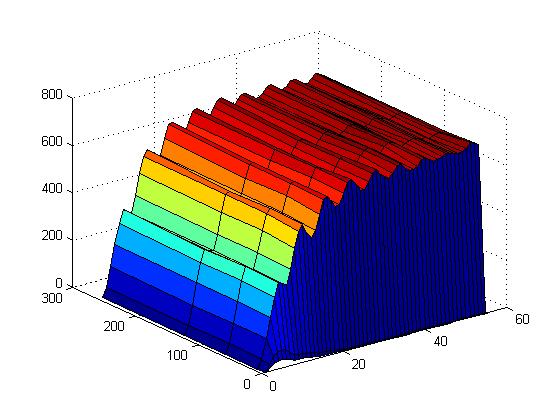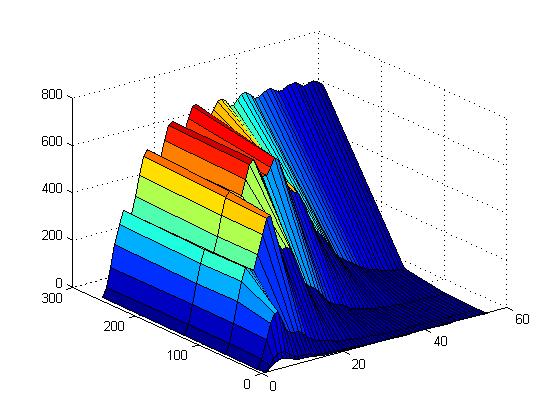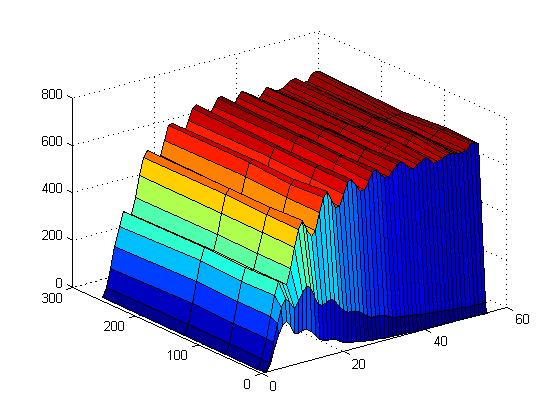Minnesota/3 July 2009
From 2009.igem.org
(New page: {|style="align:left" width="965" |- |''' Back to Notebook Home''' |- |'''Go to Previous Day (July 2)'''|| width=158|'''[[Minnesota/6 ...) |
|||
| Line 5: | Line 5: | ||
|'''[[Minnesota/2 July 2009|Go to Previous Day (July 2)]]'''|| width=158|'''[[Minnesota/6 July 2009|Go to Next Day (July 6)]]''' | |'''[[Minnesota/2 July 2009|Go to Previous Day (July 2)]]'''|| width=158|'''[[Minnesota/6 July 2009|Go to Next Day (July 6)]]''' | ||
|} | |} | ||
| + | '''Patrick'''<br> | ||
| + | Got back all of the models today. I'll explain the results of each in comparison to the base model.<br> | ||
| + | |||
| + | '''smad_ttn_tetRo_u/d'''<br> | ||
| + | <center><gallery widths=250 heights=200> | ||
| + | Image:Base.jpg|Figure 1 - Base TTN Model | ||
| + | Image:TetRo_u.jpg|Figure 2 - TetR2 Decomposition Rate Increased | ||
| + | Image:TetRo_d.jpg|Figure 3 - TetR2 Decomposition Rate Decreased | ||
| + | </gallery></center><br> | ||
| + | |||
| + | As can be seen when TetR2 decomposition is increased there is less TetR2 available and GFP production reaches its maximum (the assumed "basal" state, or state at which the cells would produce GFP is there was no repressor available) at a lower aTc concentration. When it is decreased there is more TetR2 and as aTc within the cell runs out (all of it is bound to the tetR2), GFP production becomes too slow and the GFP per cell is diluted. Dilution occurs at all aTc concentrations except for the highest, at 260 aTc molecules per cell.<br> | ||
| + | |||
| + | '''smad_ttn_tetRin_d'''<br> | ||
| + | <center><gallery widths=400 heights=300> | ||
| + | Image:TetRin_d.jpg|Figure 4 - TetR2 Synthesis Rate Increased | ||
| + | </gallery></center><br> | ||
| + | |||
| + | When the rate was increased the supercomputer had an issue with running the program (I assume there was simply too make TetR2 molecules, and the simulation failed). I'll try increasing the rate by less to see the effects. | ||
Revision as of 16:12, 30 July 2009
| Back to Notebook Home | |
| Go to Previous Day (July 2) | Go to Next Day (July 6) |
Patrick
Got back all of the models today. I'll explain the results of each in comparison to the base model.
smad_ttn_tetRo_u/d
As can be seen when TetR2 decomposition is increased there is less TetR2 available and GFP production reaches its maximum (the assumed "basal" state, or state at which the cells would produce GFP is there was no repressor available) at a lower aTc concentration. When it is decreased there is more TetR2 and as aTc within the cell runs out (all of it is bound to the tetR2), GFP production becomes too slow and the GFP per cell is diluted. Dilution occurs at all aTc concentrations except for the highest, at 260 aTc molecules per cell.
smad_ttn_tetRin_d
When the rate was increased the supercomputer had an issue with running the program (I assume there was simply too make TetR2 molecules, and the simulation failed). I'll try increasing the rate by less to see the effects.
 "
"



